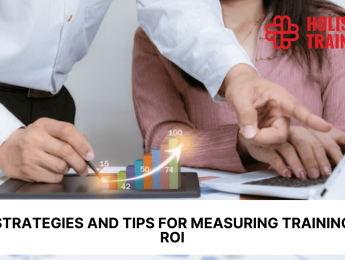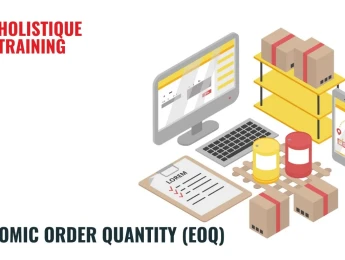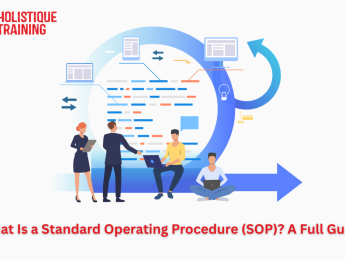- Table of Contents
- Key Components of Performance Measurement:
- 1. Six Sigma: Unraveling Operational Excellence
- 2. Quality Management Systems (QMS): Crafting Consistency and Customer Satisfaction
- 3. Economic Value Added (EVA): Decoding True Financial Health
- 4. Return on Investment (ROI): The Classic Metric of Efficiency
- 1. Data Quality and Accuracy:
- 2. Subjectivity and Bias:
- 3. Complexity and Integration:
- 4. Overcoming Resistance to Change:
- 1. Advanced Analytics and Artificial Intelligence (AI):
- 2. Real-Time Performance Monitoring:
- 3. Integrated Sustainability Metrics:
- 4. Personalized Performance Metrics:
- 5. Blockchain in Performance Measurement:
- 6. Augmented Reality (AR) and Virtual Reality (VR):
- 7. Personal and Organizational Well-Being Metrics:
- 8. Adaptive and Agile Performance Metrics:
- 9. Emphasis on Employee Experience Metrics:
- 10. Ethical Considerations in Performance Measurement:
Introduction
In the rich and intricate tapestry of organizational triumph, the delicate interplay of the art and science of performance measurement unfolds as indispensable threads, intricately weaving together the fabric of not only efficient operations and strategic decision-making but also fostering a pervasive culture of continuous improvement. This expansive exploration embarks on a profound journey, peeling back the layers of the multifaceted realm of performance measurement. As we delve into the core principles, methodologies, challenges, and the future trends that await, the complexity and significance of this intricate process become increasingly apparent. In the backdrop of an ever-evolving business landscape, the imperative for nuanced insights into organizational efficiency, effectiveness, and alignment with strategic goals elevates to unparalleled importance. So, come and traverse with us on a journey that transcends mere exploration – it is an odyssey through the very essence of performance measurement, unraveling its intricacies and offering foresight into the transformative trends that stand poised to redefine its landscape in the days to come.
What Is Performance Measurement?
Performance measurement is a comprehensive and systematic process employed by organizations to evaluate, monitor, and quantify the efficiency, effectiveness, and success of various aspects of their operations, strategies, and processes. It serves as a critical tool for organizations seeking to align their efforts with overarching goals, enhance decision-making processes, and foster a culture of continuous improvement.
At its core, performance measurement involves the collection and analysis of data to gauge the outcomes and outputs of specific activities within an organization. These activities can range from individual tasks to broader operational processes, departmental functions, and overall organizational performance. The aim is to provide a quantitative and qualitative assessment of how well an organization is achieving its objectives and fulfilling its mission.
The significance of performance measurement lies in its ability to provide actionable insights into the strengths and weaknesses of organizational initiatives. By establishing clear benchmarks and key performance indicators (KPIs), organizations can systematically assess whether they are on track to meet their goals and identify areas that require improvement. This structured approach enables informed decision-making, strategic planning, and the allocation of resources for maximum impact.
Why Performance Measurement Matters?
The significance of performance measurement extends far beyond a routine evaluation process. It serves as the cornerstone fostering accountability, transparency, and a culture of continuous improvement within organizations. By gauging performance against predetermined benchmarks, organizations gain invaluable insights into their strengths, weaknesses, opportunities, and threats. This clarity not only informs strategic decision-making but also empowers organizations to adapt to changing environments with agility.
Importance of Performance Measurement:
1. Accountability:
Performance measurement instills a sense of accountability within organizations. It allows stakeholders, including employees, managers, and executives, to be accountable for their roles and contributions. Clear expectations and measurable outcomes ensure that everyone understands their responsibilities and can be held responsible for their performance.
2. Transparency:
Transparency is a cornerstone of effective performance measurement. By openly communicating goals, progress, and outcomes, organizations establish trust with stakeholders, including employees, customers, investors, and the wider community. Transparency fosters a culture of openness and encourages collaboration.
3. Strategic Alignment:
One of the fundamental aspects of performance measurement is ensuring alignment with strategic objectives. Organizations set goals and develop performance metrics that directly correlate with their overarching mission and vision. This alignment ensures that every action and effort contributes meaningfully to the organizational strategy.
4. Continuous Improvement:
Performance measurement acts as a catalyst for continuous improvement. By regularly evaluating outcomes against established benchmarks, organizations can identify areas for enhancement. This iterative process of self-assessment encourages innovation, efficiency gains, and the pursuit of excellence.
5. Informed Decision-Making:
Informed decision-making relies on accurate and timely information. Performance measurement provides decision-makers with the necessary data to make informed choices. Whether allocating resources, adjusting strategies, or implementing changes, decision-makers can rely on performance metrics for guidance.
6. Resource Optimization:
Organizations often face resource constraints, making it essential to optimize their use. Performance measurement helps identify areas where resources are most effectively utilized and areas where adjustments can be made to enhance efficiency and effectiveness.
7. Employee Engagement:
Employees are crucial contributors to organizational success. Performance measurement, when transparent and fair, engages employees by providing a clear understanding of their impact on organizational goals. Recognition of achievements and opportunities for improvement contribute to a motivated and engaged workforce.
How Do We Measure Performance?
Measuring performance is a multifaceted process that involves the systematic assessment of various aspects within an organization. This comprehensive evaluation is crucial for understanding how well an organization is achieving its objectives, delivering value to stakeholders, and identifying areas for improvement. The measurement of performance encompasses a range of methodologies, frameworks, and key performance indicators (KPIs) that collectively contribute to a nuanced and detailed understanding of organizational effectiveness.
Key Components of Performance Measurement:
1. Key Performance Indicators (KPIs):
Key Performance Indicators are essential metrics that organizations use to measure specific aspects of their performance. These indicators are selected based on their relevance to organizational goals and objectives. KPIs can span various areas, including finical performance, customer satisfaction, operational efficiency, and employee productivity.
For example:
- Financial KPIs: Revenue growth, profit margins, return on investment (ROI).
- Customer KPIs: Customer satisfaction scores, Net Promoter Score (NPS), customer retention rates.
- Operational KPIs: Cycle time, process efficiency, error rates.
- Employee KPIs: Productivity metrics, employee engagement scores, training completion rates.
The selection of KPIs is a strategic decision that aligns with the organization's mission, vision, and overall strategic objectives.
2. Balanced Scorecard:
The Balanced Scorecard is a strategic performance management framework that provides a balanced view of organizational performance across various perspectives. Developed by Robert Kaplan and David Norton, the Balanced Scorecard considers four key dimensions:
- Financial Perspective: Metrics related to financial performance and profitability.
- Customer Perspective: Metrics focusing on customer satisfaction and loyalty.
- Internal Processes Perspective: Metrics assessing the efficiency and effectiveness of internal processes.
- Learning and Growth Perspective: Metrics related to employee training, innovation, and organizational capabilities.
By examining performance through these multiple lenses, the Balanced Scorecard offers a holistic view that ensures organizations consider both short-term and long-term objectives.
3. Benchmarking:
Benchmarking involves comparing an organization's performance against industry best practices or competitors. This process helps organizations understand where they stand in comparison to others in their industry and identify areas for improvement. Benchmarking can be applied to various aspects, such as processes, products, or services.
For instance, an organization may benchmark its customer service response time against industry leaders to identify opportunities for improvement and enhanced customer satisfaction.
4. Performance Dashboards:
Performance dashboards are visual representations of key performance metrics. These dashboards provide a real-time, graphical overview of performance, making it easier for stakeholders to interpret complex data and make informed decisions. Dashboards often incorporate charts, graphs, and other visual elements for easy comprehension.
By utilizing performance dashboards, organizations can enhance their ability to monitor ongoing activities, identify trends, and respond promptly to changing circumstances.
Table 1: Comparison of Key Components in Performance Measurement
Key Components | Key Performance Indicators (KPIs) | Balanced Scorecard | Benchmarking | Performance Dashboards |
Definition | Essential metrics aligning with organizational goals and objectives. | A strategic performance management framework considering four key dimensions. | Involves comparing an organization's performance against industry best practices or competitors. | Visual representations of key performance metrics offering a real-time, graphical overview. |
Selection Criteria | Strategic decision-making guides the choice of KPIs based on relevance to organizational goals and objectives. | Strategic alignment with organizational mission, vision, and strategic objectives. | Comparison against industry best practices or competitors for identifying areas of improvement. | Chosen based on relevance and importance to provide a comprehensive view of performance. |
Areas Covered | Spans various areas including financial performance, customer satisfaction, operational efficiency, and employee productivity. | Financial Perspective, Customer Perspective, Internal Processes Perspective, Learning and Growth Perspective. | Applicable to various aspects like processes, products, or services within the organization. | Provides a holistic view of performance across various dimensions and aspects. |
Strategic View | Strategic decision-making tool providing insights into organizational strengths and areas for improvement. | Offers a balanced view ensuring consideration of both short-term and long-term objectives. | A tool for understanding organizational standing in the industry and identifying opportunities for enhancement. | Facilitates a real-time, graphical overview for monitoring ongoing activities and responding promptly to changes. |
Development Origin | Evolves from organizational strategy and objectives. | Developed by Kaplan and Norton as a strategic performance management tool. | Originates from the need to compare organizational performance externally. | Evolves from the need for a visual representation of key performance metrics. |
Application | Guides decision-making, resource allocation, and continuous improvement efforts. | Ensures alignment with overall organizational strategy and objectives. | Provides insights into industry standards and areas for improvement within the organization. | Enhances the ability to monitor ongoing activities and identify trends for informed decision-making. |
Performance Measurement’s Tools
In the ever-evolving realm of organizational management, the quest for efficiency, strategic alignment, and continuous improvement has given rise to a plethora of tools and technologies for performance measurement. These instruments play a pivotal role in deciphering the complex narrative of organizational success, providing leaders with valuable insights to steer their ship in the right direction. Let's embark on a journey through the diverse tools and technologies that constitute the contemporary landscape of performance measurement.
1. Six Sigma: Unraveling Operational Excellence
Six Sigma , a stalwart in the realm of performance measurement, is more than just a methodology; it's a commitment to operational excellence. Rooted in the DMAIC (Define, Measure, Analyze, Improve, Control) approach, Six Sigma employs statistical techniques to minimize defects and variations in processes. Organizations adopting Six Sigma aim for near-perfect processes, ensuring a streamlined and efficient operational ecosystem.
2. Quality Management Systems (QMS): Crafting Consistency and Customer Satisfaction
Quality Management Systems, often adhering to standards like ISO 9001 , provide organizations with a structured framework for maintaining consistency and meeting customer expectations. Beyond mere compliance, QMS fosters a culture of continuous improvement, risk management, and unwavering commitment to customer satisfaction. It's the bedrock upon which organizations build their reputation for delivering high-quality products and services.
3. Economic Value Added (EVA): Decoding True Financial Health
In the financial labyrinth, Economic Value Added (EVA) emerges as a beacon, guiding organizations to assess their true economic profit. By considering the cost of capital, EVA provides a nuanced perspective on financial efficiency. It's not just about profits; it's about creating value beyond the expected return—a compass for navigating the complexities of financial performance.
4. Return on Investment (ROI): The Classic Metric of Efficiency
ROI, a classic in the financial metrics repertoire, remains a steadfast guide for organizations navigating the terrain of resource allocation and investment decisions. By comparing gains against costs, ROI serves as a compass for leaders, helping them make informed decisions about the efficiency and profitability of their investments.
Challenges in Performance Measurement
Performance measurement, while essential for organizational success, is not without its challenges. These challenges span a spectrum from data quality concerns to the subjective nature of evaluations and the complexities associated with integration. Understanding and addressing these challenges is crucial for organizations to ensure that their performance measurement initiatives are effective, reliable, and contribute meaningfully to strategic decision-making.
1. Data Quality and Accuracy:
Ensuring the quality and accuracy of performance data is a persistent challenge. Inaccurate or unreliable data can lead to misguided conclusions, impacting the validity of performance assessments. Several factors contribute to this challenge:
- Data Collection Methods: The methods used to collect data may introduce errors or inconsistencies. Automated systems, manual data entry, or reliance on outdated technologies can compromise data quality.
- Lack of Standardization: Inconsistencies in data formats, units of measurement, or data collection processes can hinder accurate performance measurement. Establishing standardized protocols is essential to ensure data uniformity.
- Data Governance: Organizations often struggle with establishing robust data governance practices. Clear guidelines, validation processes, and regular audits are necessary to maintain data integrity.
2. Subjectivity and Bias:
Subjectivity and bias in performance measurement can skew assessments and impact the fairness of evaluations. Human judgment, personal opinions, and preconceived notions may influence the interpretation of data and the assessment of individual or team performance. Mitigating subjectivity and bias involves:
- Objective Criteria: Clearly defining and communicating the criteria used for performance evaluation helps reduce subjectivity. Objectivity ensures that assessments are based on measurable and verifiable factors.
- Calibration Sessions: Regular calibration sessions among evaluators promote consistency in performance assessments. These sessions involve discussions to align interpretations and ensure fairness across evaluations.
- Training and Awareness: Providing training to evaluators on recognizing and mitigating biases is crucial. Creating awareness about the impact of bias on performance measurement fosters a culture of fairness.
3. Complexity and Integration:
Organizations often face challenges in integrating various performance metrics across different departments, functions, and levels of the organization. This complexity arises from the diverse nature of organizational activities and the need to capture a holistic view of performance. Key aspects of this challenge include:
- Diverse Metrics: Different departments may use different metrics to measure success. Integrating these diverse metrics into a cohesive framework that aligns with overall organizational goals requires strategic planning and collaboration.
- Technology Integration: The use of multiple systems and technologies for performance measurement can create silos of information. Integrating these systems to provide a unified view is a technical challenge that requires investment and expertise.
- Organizational Alignment: Ensuring that performance metrics are aligned with the overarching organizational strategy is a constant challenge. The disconnect between departmental metrics and organizational goals can hinder effective performance measurement.
4. Overcoming Resistance to Change:
Resistance to change is a common human reaction that can impede the successful implementation of performance measurement initiatives. Employees may resist new processes, methodologies, or technologies associated with performance measurement. Addressing resistance involves:
- Clear Communication: Transparent communication about the reasons for implementing performance measurement and the benefits it brings is crucial. Employees are more likely to embrace change when they understand its purpose.
- Inclusive Decision-Making: Involving employees in the decision-making process regarding performance measurement initiatives can enhance acceptance. Soliciting feedback and incorporating employee perspectives fosters a sense of ownership.
- Recognition and Rewards: Acknowledging and rewarding positive contributions tied to performance metrics can motivate employees to embrace change. Recognizing efforts and achievements reinforces the value of performance measurement.
Effectively navigating the challenges in performance measurement requires a strategic and multifaceted approach. Organizations must invest in robust data governance, promote objectivity in evaluations, address the complexities of integration, and proactively manage resistance to change. By doing so, they can establish a foundation for performance measurement that is reliable, fair, and conducive to continuous improvement. As organizations evolve, understanding and mitigating these challenges will be crucial in ensuring that performance measurement remains a valuable tool for strategic decision-making and organizational success.
What Is The Future of Performance Measurement?
The future of performance measurement is poised to undergo transformative shifts, driven by advancements in technology, changing organizational landscapes, and an increasing emphasis on holistic and sustainable business practices. This comprehensive examination delves into the evolving trends and dynamics that will shape the future of performance measurement.
1. Advanced Analytics and Artificial Intelligence (AI):
The integration of advanced analytics and AI is expected to revolutionize performance measurement. Predictive analytics and machine learning algorithms will provide organizations with the capability to forecast trends, identify potential issues, and make data-driven decisions in real-time. This predictive capability enables proactive strategic planning, allowing organizations to adapt swiftly to changing circumstances.
2. Real-Time Performance Monitoring:
The future envisions a paradigm shift from retrospective performance assessments to real-time monitoring. Technologies such as the Internet of Things (IoT) and advanced sensors allow organizations to collect and analyze data instantaneously. This real-time monitoring empowers decision-makers with immediate insights, enabling them to respond promptly to emerging challenges and capitalize on opportunities as they unfold.
3. Integrated Sustainability Metrics:
With an increasing focus on corporate social responsibility (CSR) and sustainable business practices, the future of performance measurement will incorporate integrated sustainability metrics. Organizations are recognizing the importance of measuring their environmental, social, and governance (ESG) performance alongside traditional financial metrics. This comprehensive approach reflects a commitment to responsible business practices and aligns with the expectations of socially conscious stakeholders.
4. Personalized Performance Metrics:
The future workplace, characterized by diversity and individuality, will necessitate a shift toward personalized performance metrics. Organizations are likely to adopt customized metrics that consider individual strengths, preferences, and contributions. This move toward personalized performance metrics reflects a deeper understanding of the diverse talents and capabilities within an organization, fostering a more inclusive and effective evaluation process.
5. Blockchain in Performance Measurement:
Blockchain technology is poised to play a significant role in the future of performance measurement. Its decentralized and transparent nature can enhance the accuracy and security of performance data. Smart contracts on blockchain platforms can automate performance-related transactions, ensuring reliability and eliminating potential discrepancies. Blockchain will contribute to building trust in performance data, especially in industries where transparency and data integrity are paramount.
6. Augmented Reality (AR) and Virtual Reality (VR):
As AR and VR technologies continue to advance, they may find widespread applications in performance measurement. These technologies can provide immersive training programs, simulations, and experiences that offer valuable insights into employee performance and skills development. AR and VR have the potential to revolutionize training and performance assessment methodologies, creating a more engaging and impactful evaluation process.
7. Personal and Organizational Well-Being Metrics:
The future of performance measurement will likely incorporate metrics that assess not only organizational success but also the well-being of individuals within the organization. Metrics related to employee mental health, work-life integration, and overall job satisfaction will become integral to understanding the holistic health of an organization. This approach aligns with a growing awareness of the interconnectedness between employee well-being and organizational success.
8. Adaptive and Agile Performance Metrics:
With the business landscape becoming more dynamic and unpredictable, the future of performance measurement will emphasize adaptive and agile metrics. Traditional, static metrics may give way to more flexible indicators that can quickly adapt to changing priorities and market conditions. This agility ensures that performance measurement remains relevant and responsive in an environment marked by rapid changes.
9. Emphasis on Employee Experience Metrics:
Employee experience will take center stage in future performance measurement strategies. Metrics related to employee engagement, satisfaction, and overall experience will be critical in understanding the factors that contribute to a positive workplace culture. Organizations recognizing the importance of a positive employee experience will integrate these metrics into their performance measurement frameworks.
10. Ethical Considerations in Performance Measurement:
As organizations leverage advanced technologies and data analytics, ethical considerations will gain prominence in performance measurement. Ensuring data privacy, maintaining transparency in measurement methodologies, and addressing potential biases in algorithms will be essential. Organizations will need to navigate the delicate balance between innovation and ethical responsibility.
Conclusion
Performance measurement stands as a cornerstone of organizational management, demanding not just consideration but a thoughtful and strategic approach. This dynamic force navigates through traditional methodologies like KPIs and benchmarking to embrace cutting-edge technologies, including AI, real-time monitoring, blockchain, and AR/VR, marking the evolution of its landscape. Organizations, in their pursuit of excellence, find themselves at the crossroads of established practices and emerging trends. A well-crafted performance measurement strategy emerges as more than a mere assessment tool; it aligns intricately with organizational goals, nurtures a culture of perpetual enhancement, and strategically positions the organization for enduring success in the ever-shifting business panorama. The future landscape beckons organizations not only to navigate but to actively shape change. This conclusion, extending beyond reflection, transforms into a comprehensive roadmap, inviting stakeholders to harness insights from emerging trends, advocate for inclusivity, wield technology responsibly, and prioritize the well-being of their workforce. Challenges, often seen as impediments, are redefined here as catalysts—opportunities for growth, adaptation, and innovation. As our gaze turns towards the uncharted horizons of tomorrow, the future of performance management emerges as a promising frontier marked by innovation, inclusivity, and an unwavering commitment to sustained success. The metaphorical passing of the torch signifies not just the end of a comprehensive examination but a collective responsibility—a call to illuminate a path toward a new era of performance management. This envisioned era transcends the mundane routine, propelling organizations into a dynamic force that doesn't just achieve success but defines transformative and sustained excellence.

























